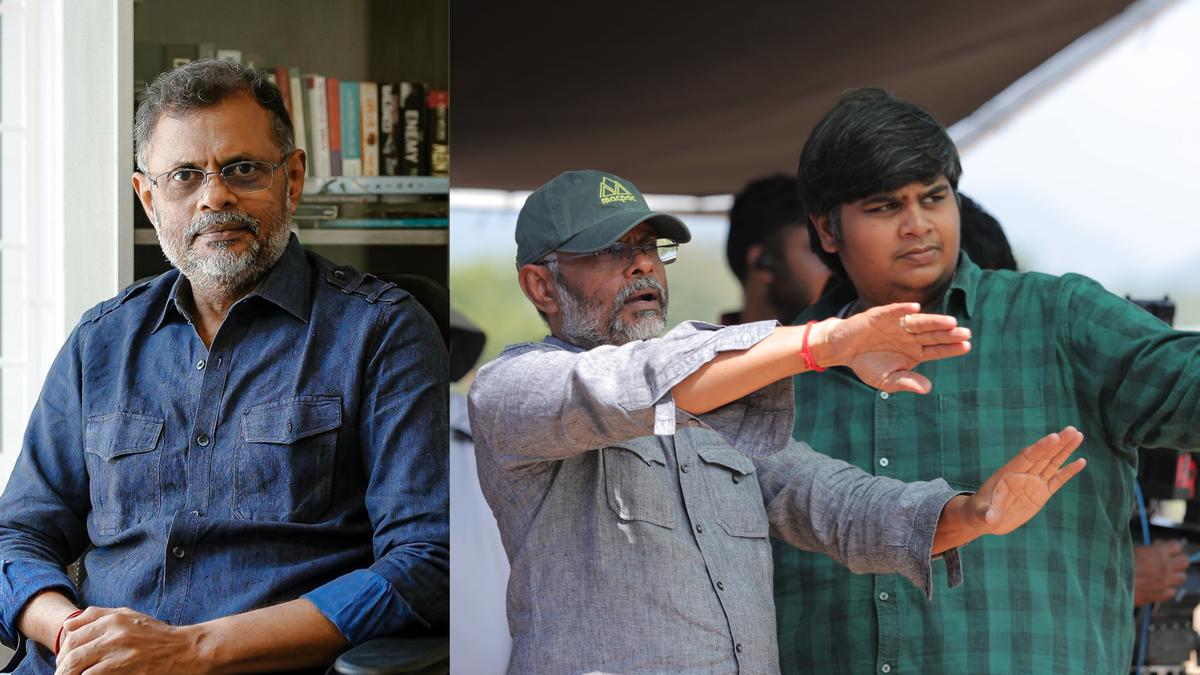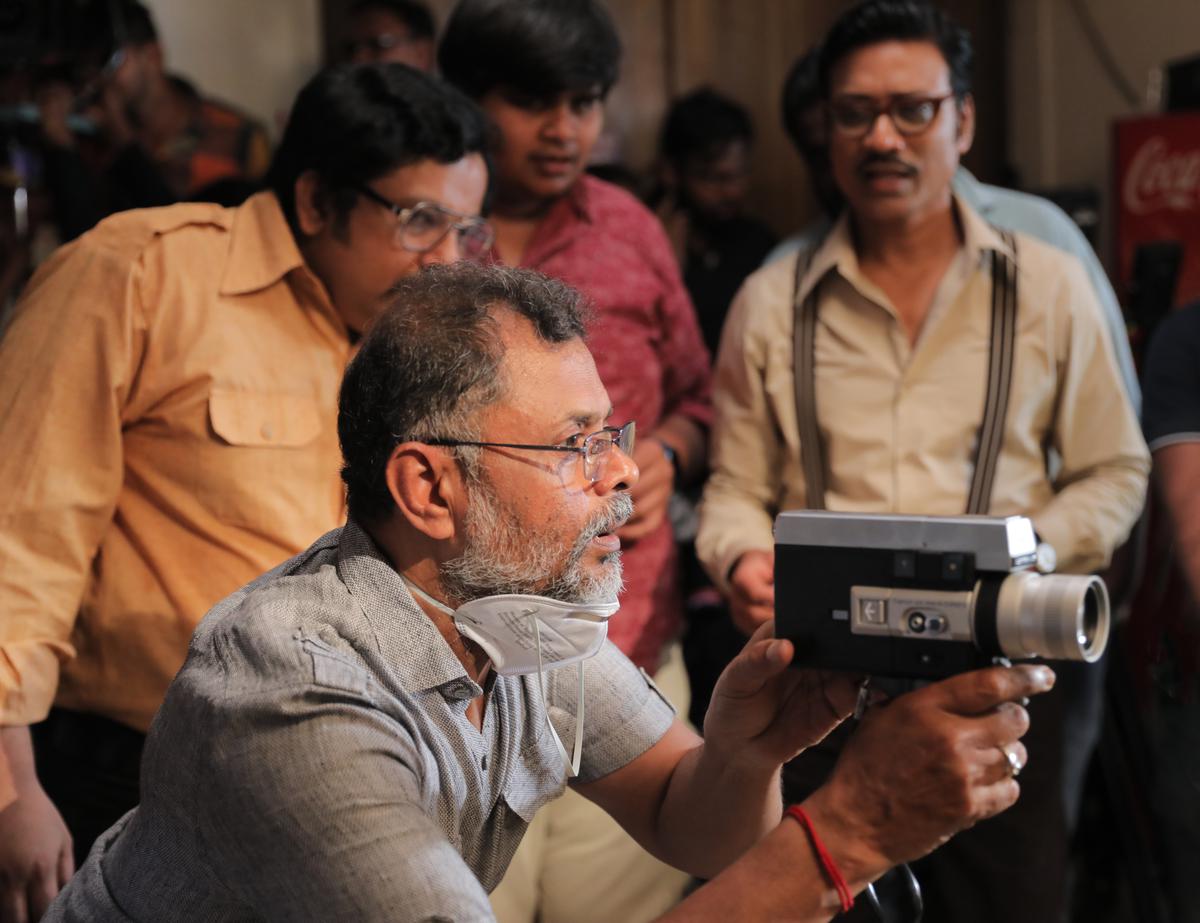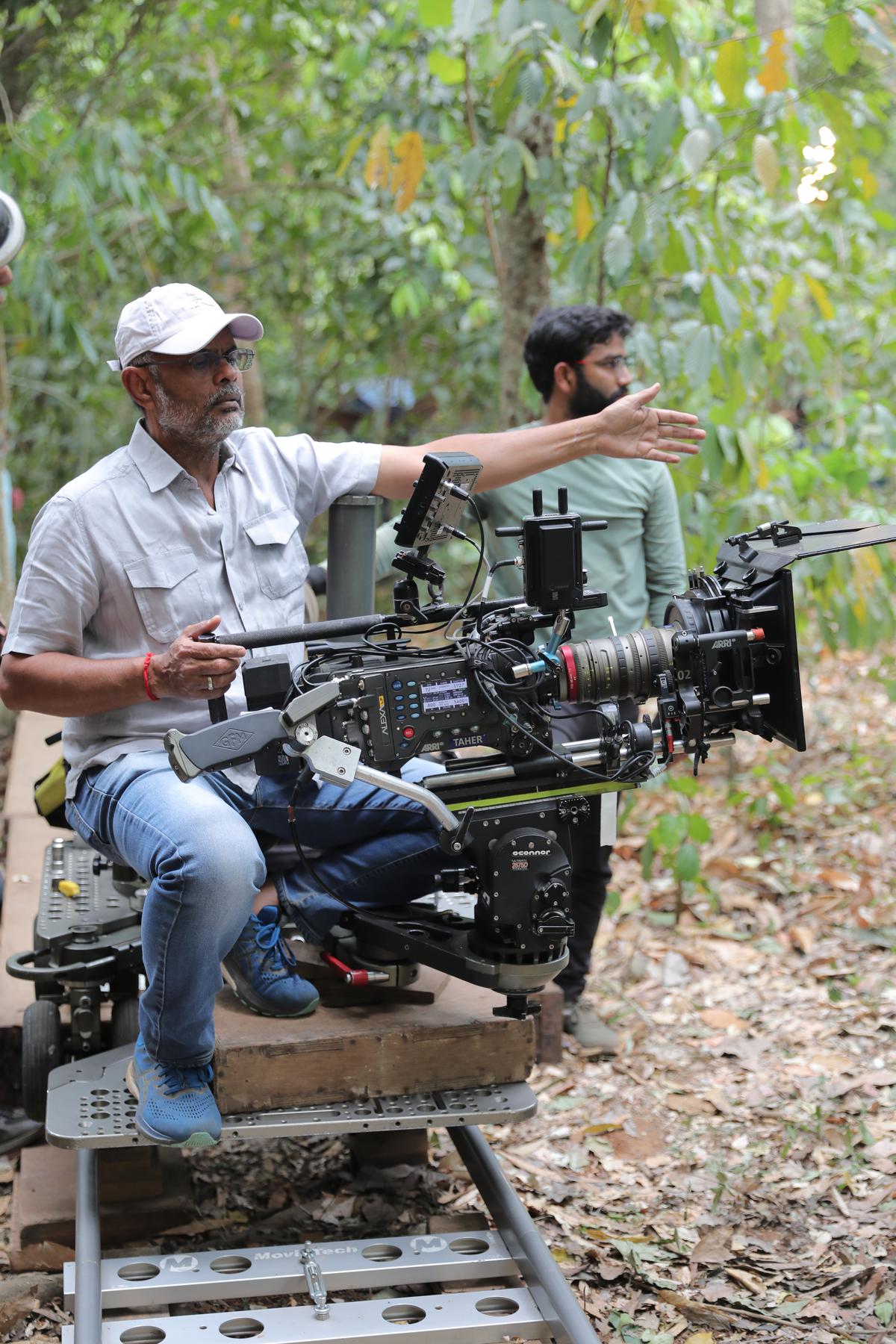
Interview | Cinematographer Tirru on breaking the norms in ‘Jigarthanda Double X’
https://th-i.thgim.com/public/entertainment/movies/ui1h59/article67533839.ece/alternates/LANDSCAPE_1200/Tirru%20Jogarthanda%20Double%20X.jpg
Tirru; with Karthik Subbaraj on the sets of ‘Jigarthanda Double X’
| Photo Credit: Special Arrangement
It’s not every Friday we get films that not only impress with their writing and direction but also leave you spellbound with the visuals. A spiritual sequel to 2014 film Jigarthanda, Karthik Subbaraj’s Jigarthanda Double X (starring Raghava Lawrence and SJ Suryah) brings together two contrasting worlds — the streets of Madurai and the forests of Kombai Sambala — and the visual storytelling adds gunpowder to Karthik’s writing. Cinematographer Tirru (a) S Thirunavukkarasu is currently in the limelight for his work on the project, one that also alleviates any comparison with the 2014 film. While he is grateful for the positive response from the audiences, Tirru also credits Karthik as a genuine, mainstream filmmaker who gave him ample freedom to play around with the visuals. “How he expressed his politics, but also paid a tribute to the art form shows his skill as a writer,” he adds.
Excerpts from the conversation:
The script of ‘Jigarthanda Double X’ is dense and a lot happens till the last frame. What went into your mind immediately after reading the script?
I thought it would look like a spin-off of Jigarthanda, but that film revolved only around a gangster’s locale; here, a filmmaker and a gangster are coming together for a bigger cause. I told Karthik not to follow what was done in Jigarthanda, and also not to tone down or restrict the number of colours that appear on screen. That’s why, for instance, Caesar’s (played by Lawrence) world is so colourful. He is a tribal man from a forest who migrates to a town, and the impact of this new world is such that even the car or the furniture he buys are all colourful. This very town is like fantasy for him. That’s why even his costumes, background and props pop. You will even find a colourful chandelier from Singapore in his room; because he is a don, one can assume that people would have presented a lot of things to him.

Tirru on the sets of ‘Jigarthanda Double X’
| Photo Credit:
Special Arrangement
Usually, films like these maintain a specific visual tone throughout, but you broke that wonderfully; how did you get that conviction?
Firstly, the generation of viewers who expect such specific visual tones in films is gone. People are now watching films with dynamic visuals. Everyone is shooting at least one clip using their mobile phones every day, so we considered that psychology as well. Those days, for period films, creators used to just put a warm tint over the visuals no matter which era it was set in. But we wanted to avoid that. We also have the freedom to experiment and break the norms while working with young filmmakers like Karthik.
Though there are many colours, the film predominantly has hues of orange and green; in the forest, in the streets of Madurai, inside Caesar’s room, and so on… was this pre-planned?
Yes. Usually, a forest is depicted with a lot of gloominess, but here, that gloominess is already there in the story. So we went the opposite way. A forest is full of vibrant life. It provides life to so many tribals and I wanted to show how they were losing something that is so abundant and resourceful. Also, using colours the routine way for this film felt too contrived.
So, is there a connection between a character’s introduction as a shadow through orange smoke in a street, and later a wild animal’s introduction through orange-tinted fog?
No, that wasn’t pre-planned (laughs). I wanted to push things a bit in that scene. This is a street that’s emptied by a gangster to do his business, and there’s a temple nearby. Those days, they used to put a lot of sambrani smoke in the evenings and temples had sodium lights. We wanted to keep that as the source to create that orange vibe.
The symmetrical frames in the film are being spoken about a lot…
Those frames are meant to establish the conflict between the two parties. There’s a reason behind why, in the scene that happens after they capture the forest brigand Shettani, it’s the cop (Naveen Chandra) who is standing opposite Caesar while holding Shettani in the centre. But not every symmetrical shot is consciously designed like that; what the scene demands and how it flows decide everything.
A still from ‘Jigarthanda Double X’
| Photo Credit:
Special Arrangement
Even in the many spaghetti western-inspired stand-offs we get in the film, the shot composition is interesting. Like, you focus on the holster of the gun for Caesar but unlike in those films, you don’t do the same for the opponent…
Because doing just that would be like copying. We subverted it because Clint Eastwood’s films have influenced only Caesar, not the opponent. We chose not to use this subversion in a different stand-off, when the person opposite is someone well-versed in using guns.
Your debut was in ‘Magalir Mattum,’ a film by Singeetam Srinivasa Rao who famously pulled off some mind-blowing graphics in films like ‘Michael Madana Kama Rajan’. You also worked in titles like ‘Aalavandhan’, ‘Krrish 3’, and ‘24’. In this film, the VFX is so seamless; how has the technology evolved in Indian cinema?
For us, it was quite simple. The VFX should help without disturbing the narrative, especially during the emotional portions as it might create a disconnect.
Indian filmmakers are yet to utilise this technology well. Most are using it only as a gimmick. What Hollywood pulled off, like say in The Revenant, is the benchmark and a reference to us. Even in that film, it’s used as a tool to help narration. In cinema, technology should always be about elevating the storytelling.
What excited you the most during the shooting of the film?
We kept the camera flowing, but we broke the rules in camera movement and where to cut because there’s an indiscipline in these characters as well. Challenges always excite me and it was challenging to shoot in those mountain regions.
My biggest takeaway is the creative call that Karthik took ahead of the climax scene. It breaks the formulaic, filmy approach that cinema is accustomed to. You need to convince the audience about what you’re trying to tell.

Tirru on the sets of ‘Jigarthanda Double X’
| Photo Credit:
Special Arrangement
Some cinematographers like to have a particular signature in all of their works. Do you desire such a particular style?
No, there is no such signature. It’s all about how intelligently we solve challenges and use the craft in storytelling. You can push things a little if it doesn’t disturb the narration and only enhances it. More than authenticity, it’s about how you approach what needs to be done with maturity.
Directors usually take a break before moving on to another film. You shot ‘Jigarthanda Double X’ and Shankar’s ‘Game Changer’ simultaneously. Do cinematographers feel any creative hangovers at all?
No, because we are trained to please the clients (laughs). When I step onto another movie’s set, my mind is aware of the requirements of that story and the feel of its presentation. It’s astonishing how directors, like the late IV Sasi, made multiple films at once, but cinema is no longer just about capturing the character and the drama. These days, there’s a lot more that goes into the making and directors and cinematographers have to do a lot of homework. But because cinematographers operate around practical difficulties more than creative difficulties, we don’t feel that hangover; directors or writers need to think from ten different angles and produce something creative organically. Also, it’s not financially feasible for a cinematographer to do one film at a time.
Shankar is known for his political themes. What does ‘Game Changer’ have in store?
It’s an out-and-out Shankar sir film with all his signature strokes, be it the political themes, unbelievable visuals in songs and experiments with presentation. It will definitely shock the Telugu audiences.
#Interview #Cinematographer #Tirru #breaking #norms #Jigarthanda #Double


